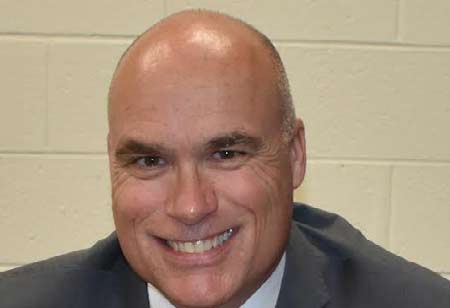

Thank you for Subscribing to Gov Business Review Weekly Brief

Author, John Holden, was Director of Economic Development and Tourism in Stafford County and a founding member of the Testbed before taking on his new role as Smart City Manager in the City of Raleigh, North Carolina.
Coauthors: David Ihrie is the CTO and Director of Strategic Initiatives at Virginia Innovation Partnership Corporation; Mike Cannon was the CTO in Stafford County and is now leading the Smart City initiative for NFF; Uma Marques is the Manager of the Virginia Smart Community Testbed; Tom Snyder is CEO/President of RIoT. In the development of place, people, business, and community, I always ask “what’s next.” Just before, during, and after the world-changing events of Covid-19, I had the opportunity to do so, with my friends and colleagues, and, together, we entered the vast market of smart technology. Together, we established the Virginia Smart Community Testbed that serves as a model for local, state, federal, nonprofit, and private partnerships to foster innovation, test, and deploy smart and IoT technology in Virginia. The Virginia Smart Community Testbed (Testbed) evolved from an idea to build a smart and connected downtown to creating a “living laboratory” to explore and test smart technology in communities across the Commonwealth. It has also become recognized as a model for other states and communities looking to improve their public infrastructure, develop new means to protect their citizens, and encourage new business development. This living laboratory is where smart technology, sensors and IoT devices are put to test in the field through Pilot Projects. These Pilot Projects test out various smart technologies and how they may be integrated with other systems to solve local issues to help improve the public quality of life. The Testbed has deployed a variety of use cases. One core project that embodies the public-private partnership is the deployment of environmental sensors including flood, wildfire and microweather devices. Our Federal partner, the Department of Homeland Security Science & Technology Directorate, purchased cutting-edge and economically viable sensors and made them available to the Testbed. Deployed in various parts of Virginia for our state partner managed the overall program. Stafford County and other Virginia community partners maintain the sensors. This work most recently culminated in a FEMA public warning exercise that demonstrated how these sensors can provide early public warning to help citizens avoid the dangers resulting from weather events. “The Virginia Smart Community Testbed was developed and launched through true collaboration from a group of individuals who sought to answer the question of how communities can benefit through the deployment of smart technologies” The Testbed also pioneered a new type of smart lighting in the United States. In addition to energy savings and better control of the timing and brightness of illumination, the lights form their own high-speed 60 Ghz mesh gigabit network, relaying information along a chain of luminaires . These and other poles can host additional sensors and/or Wi-Fi hot spots using Power of Ethernet (PoE) connectivity. This offers a low-cost installation of broadband access for unserved multifamily dwelling units. As part of the installation the Testbed also demonstrated the feasibility of a commercial “microtrenching” capability that allows high speed fiber to connect a luminaires to the internet without the ripping up of streets or digging trenches,--thus accelerating the installation of fiber from days to hours. A third example is a pilot project, and our own flexibility and innovation, was one of our first. Security is first and foremost in our projects. In this first project we demonstrated the implementation of new hardware-based “zero trust” IoT solution that allows for easy retrofitting of existing connected devices. This capability is currently in use by local partners for security cameras and forms the basis for a new, highly secure, “public data infrastructure.” Many other pilot projects, large and small have been demonstrated in the Testbed. Ranging from public outreach software to artificial intelligence-based smart cameras, gunshot detectors and even smart mousetraps that can help target and thereby reduce the use of rodenticides in the food supply chain. The Virginia Smart Community Testbed was developed and launched through true collaboration from a group of individuals who sought to answer the question how communities can benefit through the deployment of smart technologies. We put people first. We envisioned a place to test smart technology and a site for entrepreneurship. Coupled with a nonprofit economic development organization focused on IoT and technology the Testbed has spurred economic growth for companies from around the world. Building a regional and world-wide “ecosystem” of innovators and entrepreneurs has allowed companies, large and small, to test their products “through” the Testbed. The Testbed is unique to Virginia, but its model is being explored elsewhere. It was created through the vision of its founders in Stafford County, the Virginia Innovation Partnership Corporation, a private sector entity OST, Inc. and in collaboration with RIoT. In its simplest form it is a model that requires local and regional collaboration and asking the question, “What’s next?” It and any such “testbed” offers a safe zone for innovators to test their market-ready products and co-evolve their innovation in partnership with future buyers. The Testbed continues as its founders, authors, here, explore what they have learned in new roles, all dedicated to exploring the answer “what’s next.”I agree We use cookies on this website to enhance your user experience. By clicking any link on this page you are giving your consent for us to set cookies. More info